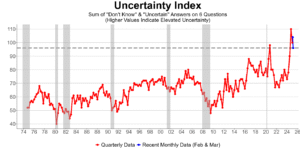Sergey Baburov. Founder of HYDE.
When it comes to the modern café experience, offering quality coffee is no longer enough. Consumers increasingly expect more, desiring a space where they can work, meet friends, read or unwind after exercise.
Overall, across the globe, coffee shops are once again becoming important third-space sites, and even chains that once prioritized grab-and-go service are going back to this emphasis; this is why I see such promise in offering services such as book sections or fitness areas within your coffee shop.
As this transformation reshapes the business model of our industry, I think it’s important to find ways to keep customers engaged, increase their loyalty and even expand your audience. So, how can businesses capitalize on this emerging approach?
How The Coffee Market Is Changing
As touched on, what was previously guaranteed and stable growth, opening more locations, no longer works. Consumers are increasingly seeking more than just a beverage from their coffee shop experience.
In the United States, more than 40,000 coffee shops are in operation, and competition is intensifying. To remain viable, some operators are transforming their spaces by introducing coworking areas, social zones and retail shelves.
Across Europe and Asia, I see multi-format coffee shops as having become the norm. Optimistically, specialty coffee consumption in the EU is projected to grow at an annual average compound annual growth rate of 13% over the period 2022 to 2030.
However, I think the more notable trend is the development of coffee shops that combine their core offering with bookstores, art platforms and concept stores. In cities like Tokyo, Singapore and Seoul, coffee shops have evolved into multifunctional spaces where customers can work, attend creative events or discover local brands.
For instance, Tokyo’s Bunkitsu blends a curated library of over 30,000 books with unlimited coffee, creating a paid sanctuary for readers and workers, while Daikanyama Tsutaya Books offers a chic mix of literature, art and a Starbucks Reserve lounge. Furthermore, the flagship Muji store in the Ginza district is a ten-story space that includes a café, bookstore, exhibition areas, bakery and even a hotel. This project demonstrates how coffee shops can integrate into retail environments and provide customers with a unique experience.
JustCo in Singapore is a network of coworking spaces featuring things like comfortable relaxation areas and a coffee bar. This format makes the space ideal for both work and socializing. Meanwhile, Seoul’s Starfield Library in COEX Mall combines a vast book collection with coffee zones and cultural events, drawing diverse crowds.
But this trend is not exclusive to Asia. In the United States, I see coffee shops increasingly merging with coworking spaces. Others across Europe are looking to turn coffee shops into lifestyle spaces that incorporate fashion and technology.
I believe this approach can help attract varied customer groups—from creatives to professionals—and boost average spending by offering more than just a cup of coffee. I see today’s thriving coffee shops as the ones that focus on offering additional value and a welcoming atmosphere.
How Multi-Format Coffee Shops Can Boost Profitability
Hybrid coffee shops that combine multiple business elements can demonstrate stronger financial resilience compared to traditional models. This approach promises to drive higher average spending, broaden the customer base and strengthen loyalty.
Simply put, customers tend to spend more time in such spaces, which increases the likelihood of additional purchases. While working on their laptops or browsing books, they often order a second coffee, dessert or complementary products like accessories and snacks. This naturally raises the average transaction value.
By building partnerships with fitness studios, bookstores and fashion brands, you can attract new customers without significant marketing costs. Visitors to neighboring businesses are introduced to the coffee shop, while regular coffee shop patrons discover partner brands. This synergy boosts foot traffic and expands the customer base.
Moreover, the unique atmosphere of these spaces fosters repeat visits. Cozy work zones, reading nooks, or post-yoga coffee breaks become part of customers’ routines. According to a 2024 McKinsey study, enhancing customer experience through digital technologies reduces pressure on traditional service channels and improves customer satisfaction, driving loyalty and revenue growth.
This stability makes multi-format coffee shops attractive to investors. Their revenue is diversified beyond coffee sales, reducing the impact of seasonal fluctuations. I view such projects as lower-risk and offering faster returns.
How Entrepreneurs And Investors Can Capitalize On This Trend
The first step is selecting a suitable industry for collaboration. Fitness studios, bookstores, coworking spaces and fashion showrooms naturally align with coffee shops, enhancing the core coffee experience. Conducting audience research in advance is crucial—understanding preferred brands, interests and lifestyle habits helps ensure a successful partnership.
Before scaling, testing the concept is also essential. You can try temporary pop-up coffee corners in fitness studios or bookstores to gauge demand. Conversely, hosting events such as yoga sessions with coffee or book readings accompanied by tastings provides immediate customer feedback.
Digital tools can also play a vital role in the success of hybrid models. CRM systems are a great way to help analyze customer behavior, while mobile pre-order apps streamline service and minimize queues. Moreover, loyalty programs that reward bundled purchases—for example, coffee paired with a book—can encourage repeat visits.
If the pilot phase proves successful, the model can be expanded—either franchised or enhanced with additional services at existing locations. Automation trends should also be considered: self-service zones and robotic coffee counters reduce costs and improve operational efficiency.
Conclusion
The future of the coffee market is expanding beyond beverages. Multi-format coffee shops are already becoming standard in Asia and Europe, and this trend is rapidly gaining traction in the United States and Russia. Businesses that embrace these hybrid models early are likely to secure market leadership.
My work with coffee projects has shown that integrating coffee shops with other industries enhances customer loyalty and drives revenue growth. In the coming years, I foresee multi-format spaces leading the market. The question is not whether to explore this concept but who will tailor it best to their audience and reap the greatest benefits.
Forbes Business Council is the foremost growth and networking organization for business owners and leaders. Do I qualify?
Read the full article here











